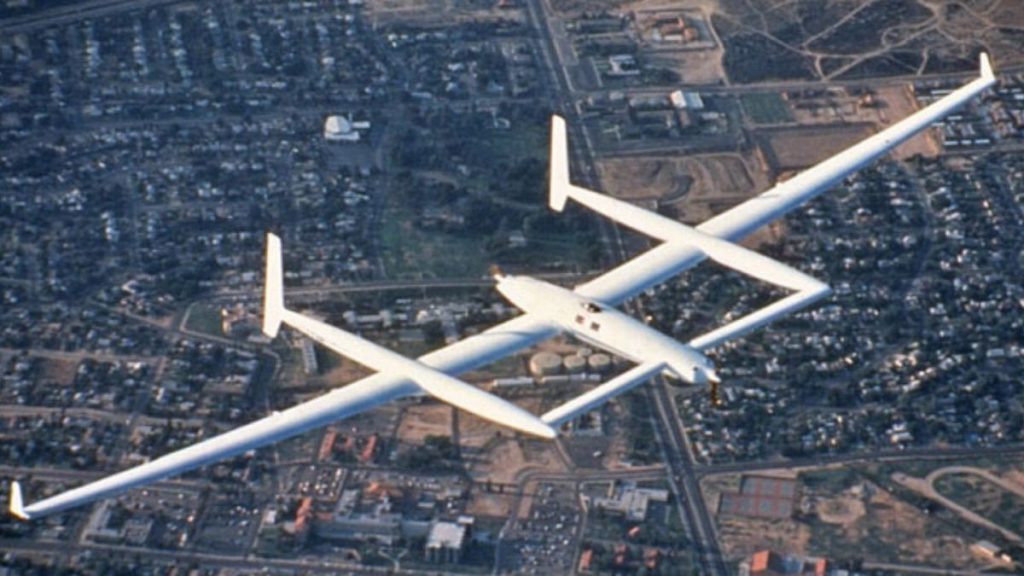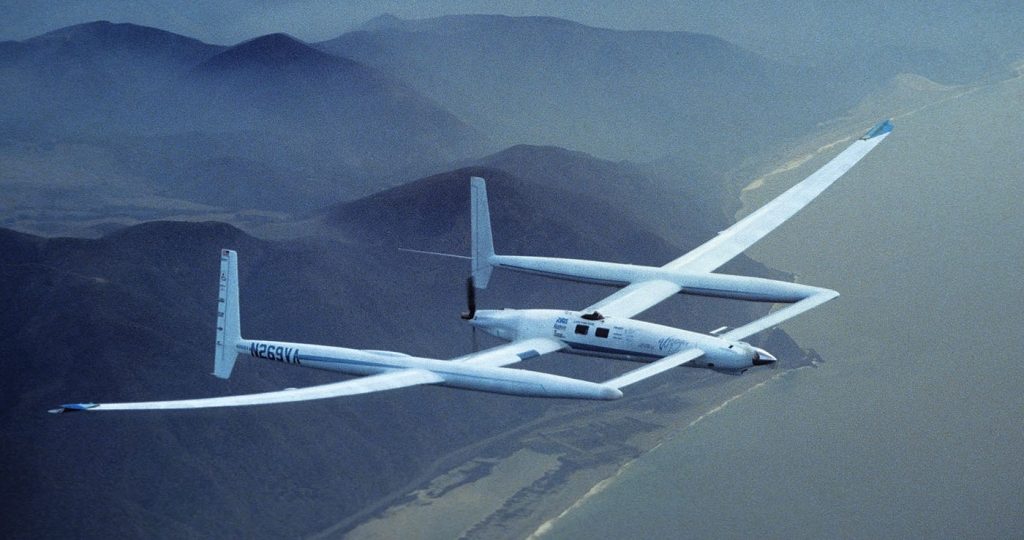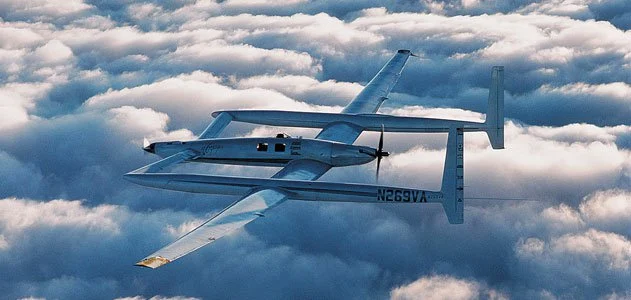Nearly 36 years ago, in December 1986, two pilots, Dick Rutan (1939–) and Jeana Yeager (1952–) landed an odd-looking aircraft called Voyager in the California desert after making the first nonstop flight around the world without refueling.
The aircraft departed from and landed at Edwards Air Force Base in the Southern California desert. In September of 2013, Dick Rutan recounted the Voyager’s almost 25,000-mile circumnavigation of the globe to employees at NASA’s Dryden Flight Research Center.

The Voyager pilots spent 9 days, 3 minutes, and 44 seconds aloft in a cabin the size of a phone booth. The 25,012-mile (40,244-km) flight was the last major milestone left in aviation and was the result of six years of work. Pilot Dick Rutan and his brother Burt, Voyager’s designer, intended the plane and the round-the-world flight to usher in a new era in aviation that would take advantage of novel materials and designs.
The $2 million Voyager was built by hand over 18 months in a hangar at Mojave Airport. The money to finance the project was raised from corporations in exchange for commercial endorsements by the pilots after the flight. Money was also raised through the sale of T-shirts and other merchandise promoting the project. Volunteers helped in the construction, and materials used to build the plane were donated by corporate sponsors.

The composite material that was used in the plane was a combination of carbon graphite fibers in epoxy set over a layer of woven fiberglass honeycomb. This construction was 20% lighter than aluminum and seven times as tough.
Dick Rutan, who was 49 years old at the time of the flight, was a highly decorated Air Force officer who had flown over 300 missions during the Vietnam War. Jeana Yeager was an accomplished pilot who held several aviation records for flight distance and speed, some of which had been held by her co-pilot, Dick Rutan. Rutan and Yeager were romantically linked during the development phase of the Voyager project but split up several months before they piloted the flight.
The two pilots had different approaches to the mission. Rutan was reportedly determined to set a milestone by completing the flight, while Yeager said that she would have been satisfied with having broken ground in aviation even if the flight around the world was not successful.


